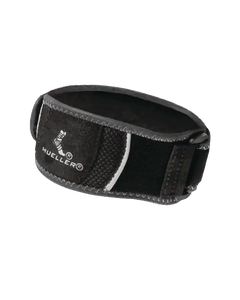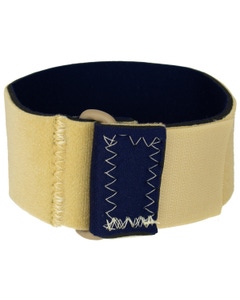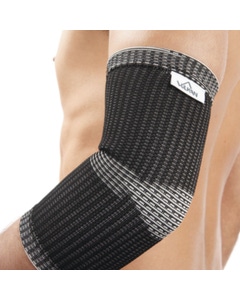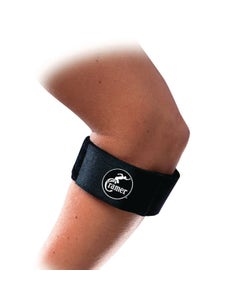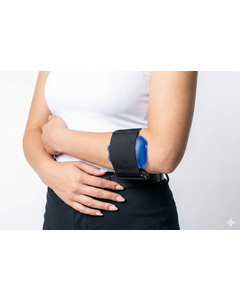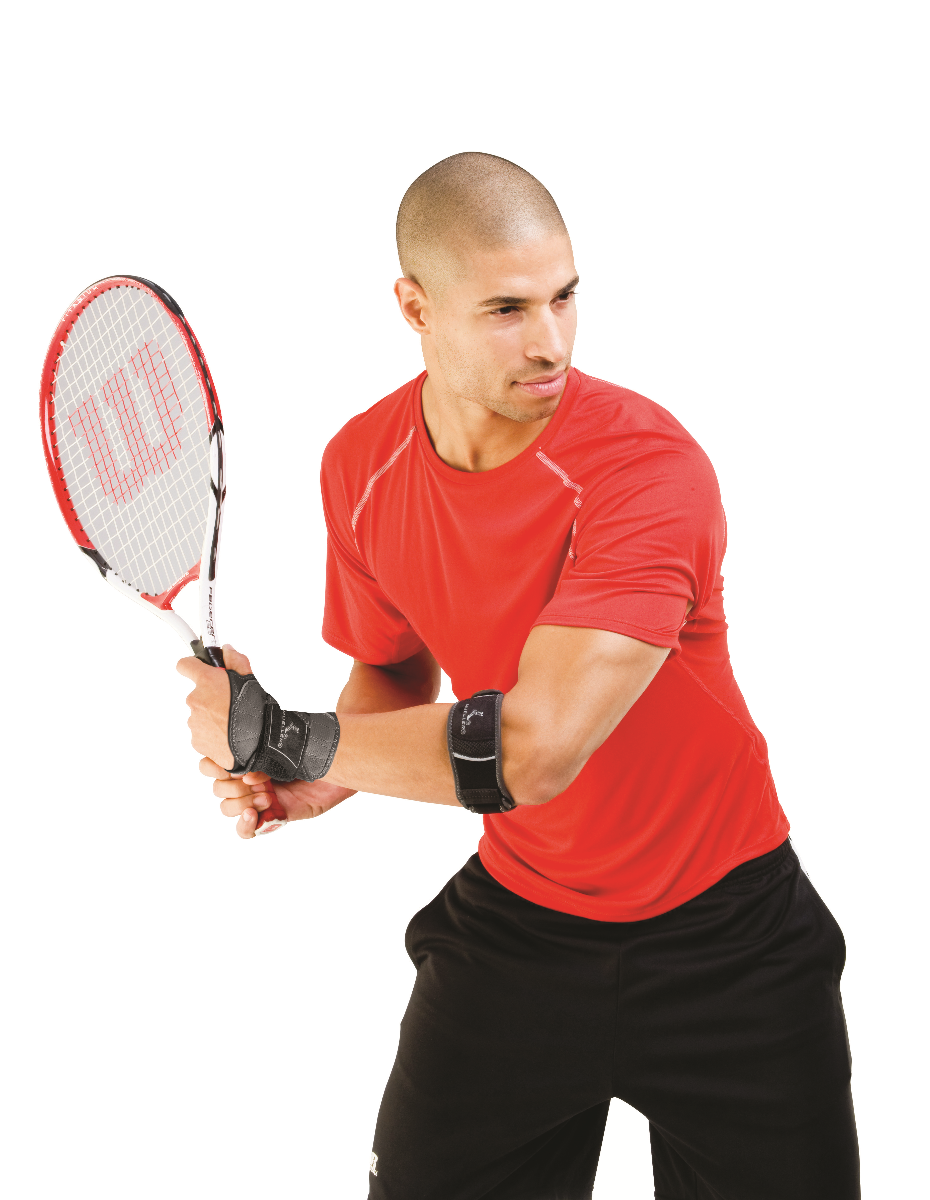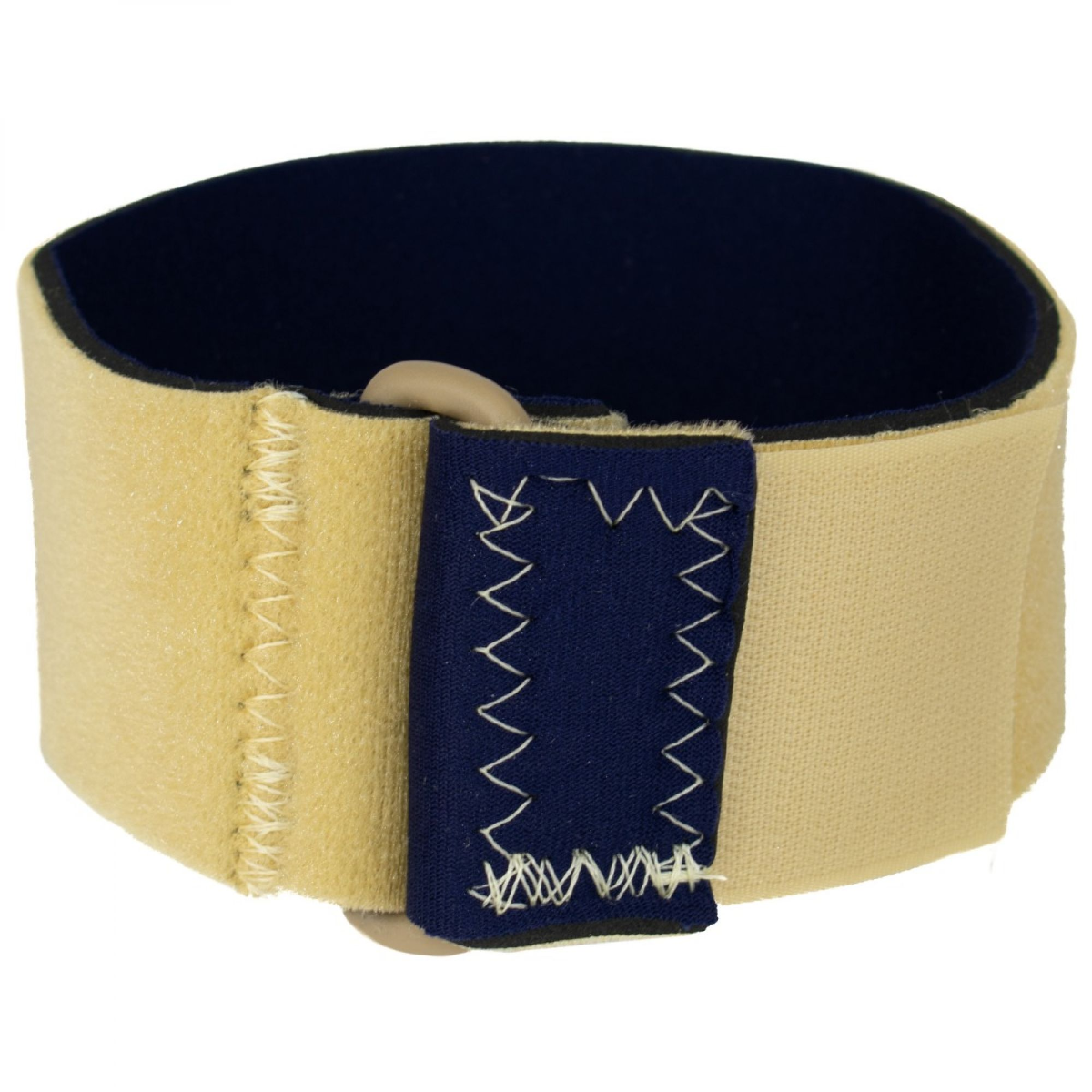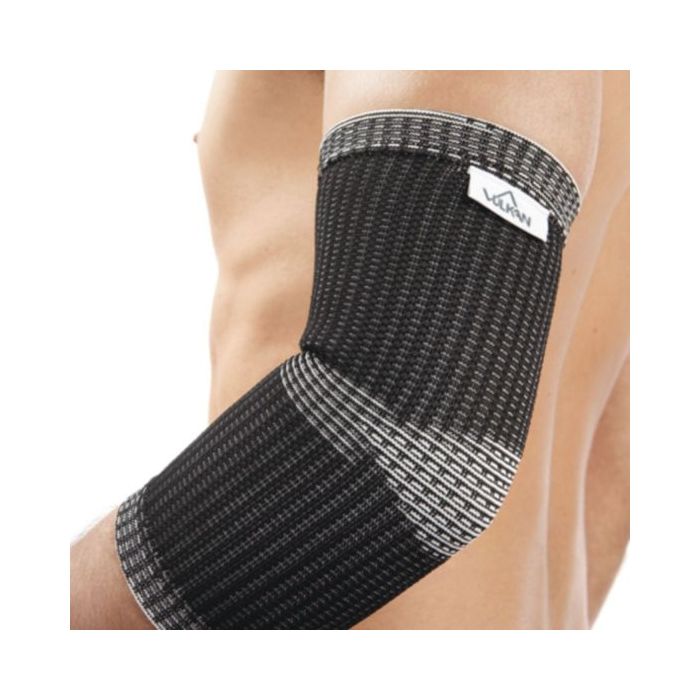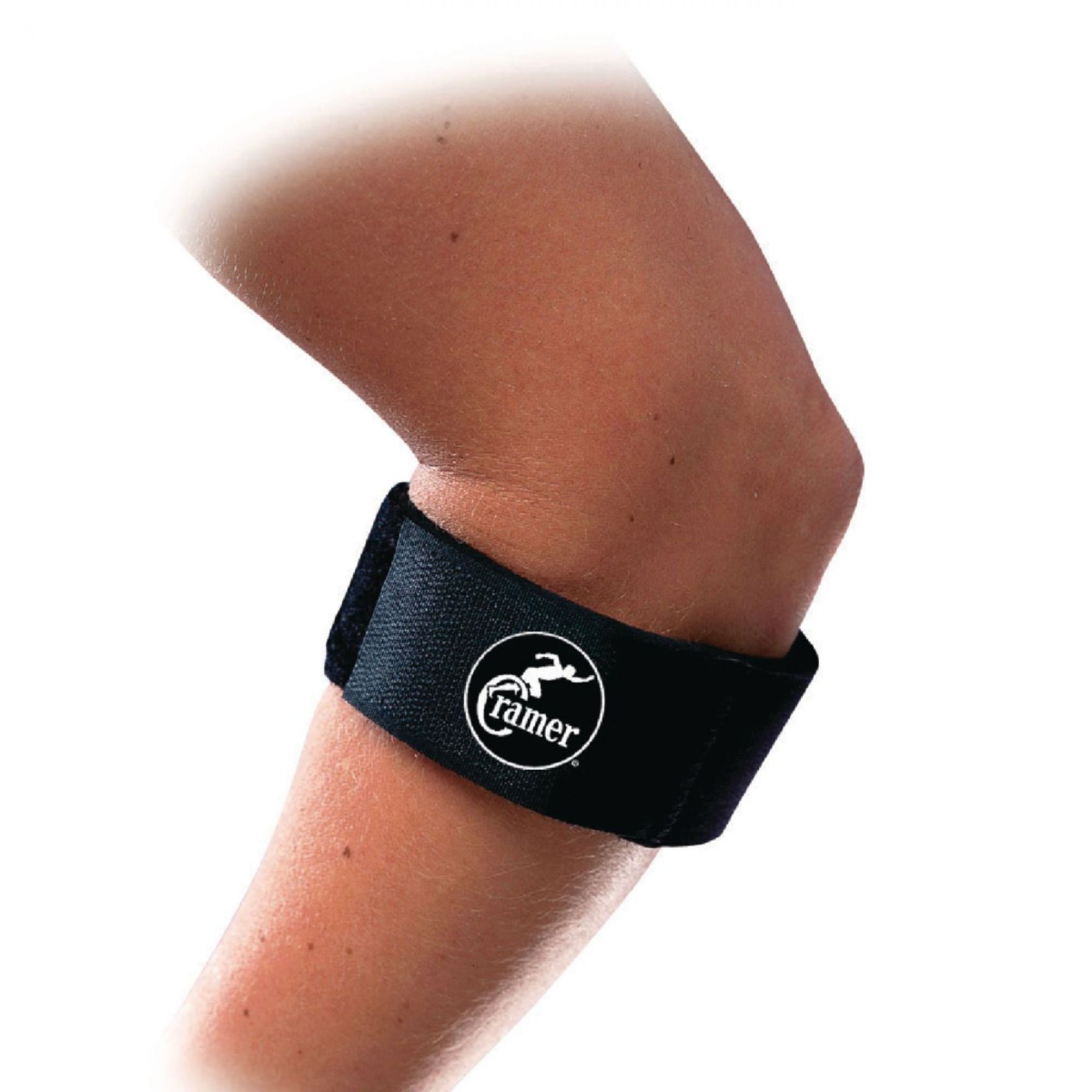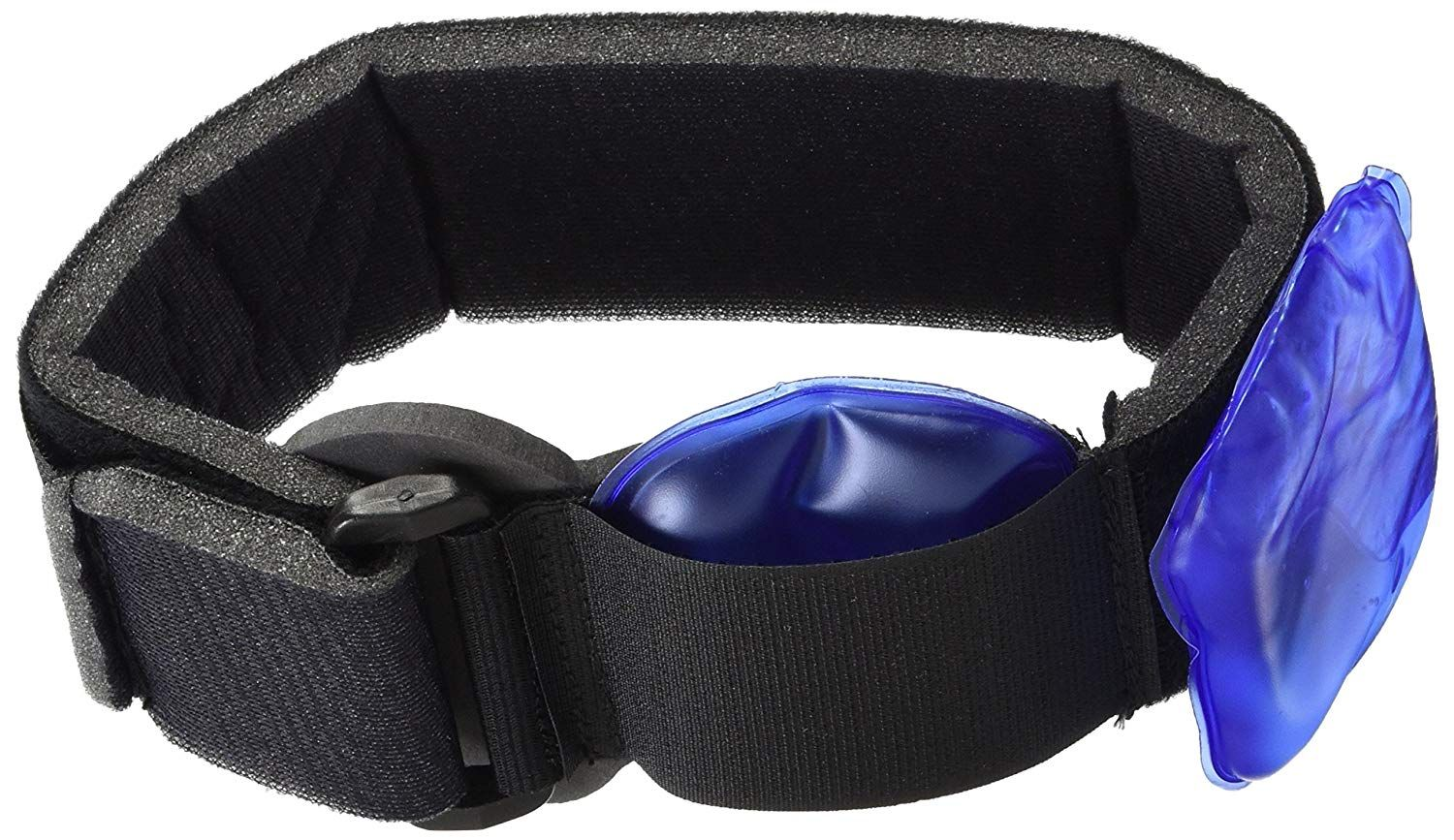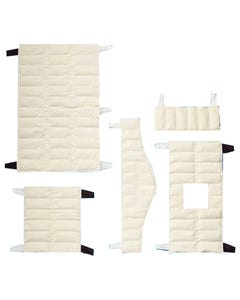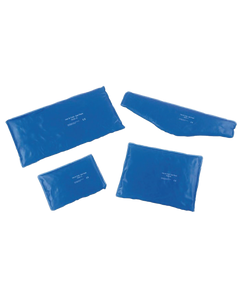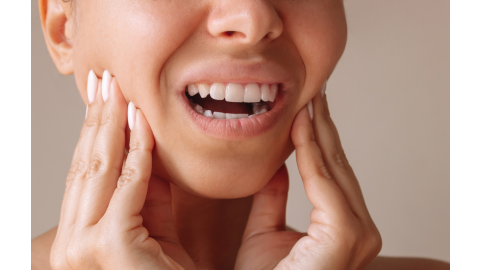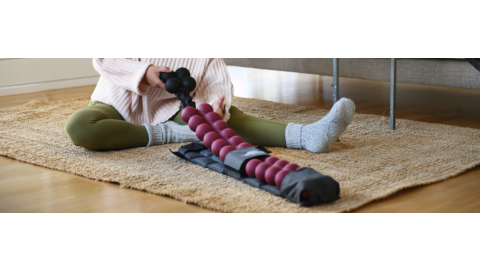Don’t let elbow pain limit your patients’ daily lives. Learn the signs of tennis elbow and how to relieve the pain caused by this condition.
Key Takeaways
- Outer elbow pain may be indicative of tennis elbow.
- Tennis elbow is a painful condition that doesn’t just affect tennis players.
- No matter what activity is causing your patient’s elbow pain, proper form is key.
- While there are exercises to treat tennis elbow, braces can provide fast, temporary relief.
Top Products in This Article
Table of Contents
Outer Elbow Pain? It Might Be Tennis Elbow
The 5 Best Tennis Elbow Straps
Pain Relief Alternatives
Outer Elbow Pain? It Might Be Tennis Elbow
The elbow pain that many athletes, especially tennis players, refer to as tennis elbow is most associated with lateral epicondylitis. This condition is caused by overloading the tendons that wrap around the outside of the elbow, often with repetitive motions of the arm or wrist. These movements create small tears in the tendons between the forearms and the outside of the elbow and cause outer elbow pain.1
Tennis elbow doesn’t affect just tennis and golf players. Athletes of other sports suffer from it, and it is common for anyone who performs physical labor, whether around the house or for an occupation.
There are a few ways to treat or prevent tennis elbow. Most importantly, no matter what sport or activity is causing your patient’s tennis elbow, make sure they’re using the proper form.
Watch the following video for more information.
Once your patient’s form is corrected, another source of pain relief is elbow braces, straps, and supports. So which one is right for your patients?
The 5 Best Tennis Elbow Straps
5. Basic Strap: Mueller Hg80 Tennis Elbow Brace
The Hg8-0 Tennis Elbow Brace by Mueller is recommended for any activity involving a strong grip or strain on the forearm and elbow. Made to provide targeted pressure across the extensor muscle, the latex-free brace features an improved shape, liner, soft fabric tab and soft-feel gel pad.
4. Classic Strap: Rolyan Neoprene Tennis Elbow Strap
All elbow braces, straps, or supports that are designed for lateral epicondylitis redirect force that would go to the tendons of the elbow.2 They move this force to the location of the strap, and this has been clinically proven to increase the amount of grip strength users could generate without feeling pain.3
The Rolyan Neoprene Tennis Elbow Strap is a classic design of an elbow strap. It is worn just below the elbow and tightened with a hook & loop closure to a firm, but not restrictive fit.
3. Strap and Sleeve: Vulkan Advanced Elastic Elbow Support
A study conducted on elbow strap effectiveness also found that elbow sleeves were effective as long as they featured a built-in strap. The most important aspect of an elbow support used for lateral epicondylitis is the strap because it redirects forces away from the tendons around the elbow.
A Vulkan Advanced Elastic Elbow Support maintains the effectiveness of a strap but with the added benefit of an arm sleeve. The gentle compression of the sleeve can help reduce swelling and increase blood flow to the arm, making them great braces for wearing while exercising or afterward as a recovery aid.
2. Premium Material Strap: Cramer Tennis Elbow Strap
The Cramer Tennis Elbow Strap functions similarly to the Rolyan Neoprene Strap but with a few added benefits. It’s constructed from premier materials that are designed to hold up to the long-term wear and tear of athletic use. It also features a dual-density foam pad that is specially designed to absorb shock and vibrations in the forearm muscles.
1. Strap and Ice Pack: Rolyan Gel/Air Elbow Support Universal
Like the Cramer Elbow Strap, this strap features a pad that increases its ability to absorb shocks and protect the elbow. The strap also comes with a second pad that is made from a gel pouch.
The pouch functions as a small ice pack and can be frozen for cold therapy. It is held in place by the strap and functions as a pressure pad and a source of cooling pain relief. The strap can be worn with the air pad during the workout and with the gel pouch post-workout for recovery.
Applying an ice pack to the elbow can help manage short-term pain and reduce swelling caused by lateral epicondylitis or other minor injuries.4
Pain Relief Alternatives
If you a patient already have a brace or wants to add another treatment method along with a brace, start by looking for a good cold or heat pack. Cold packs are best used in the first 24 to 48 hours after an injury. After it’s best to switch to heat therapy. A hot pack will help soothe sore muscles and tendons around the elbow after swelling has subsided.
Topical pain relievers are another great way to treat elbow soreness. Biofreeze uses a unique menthol formula that blocks pain signals from being sent to the brain.

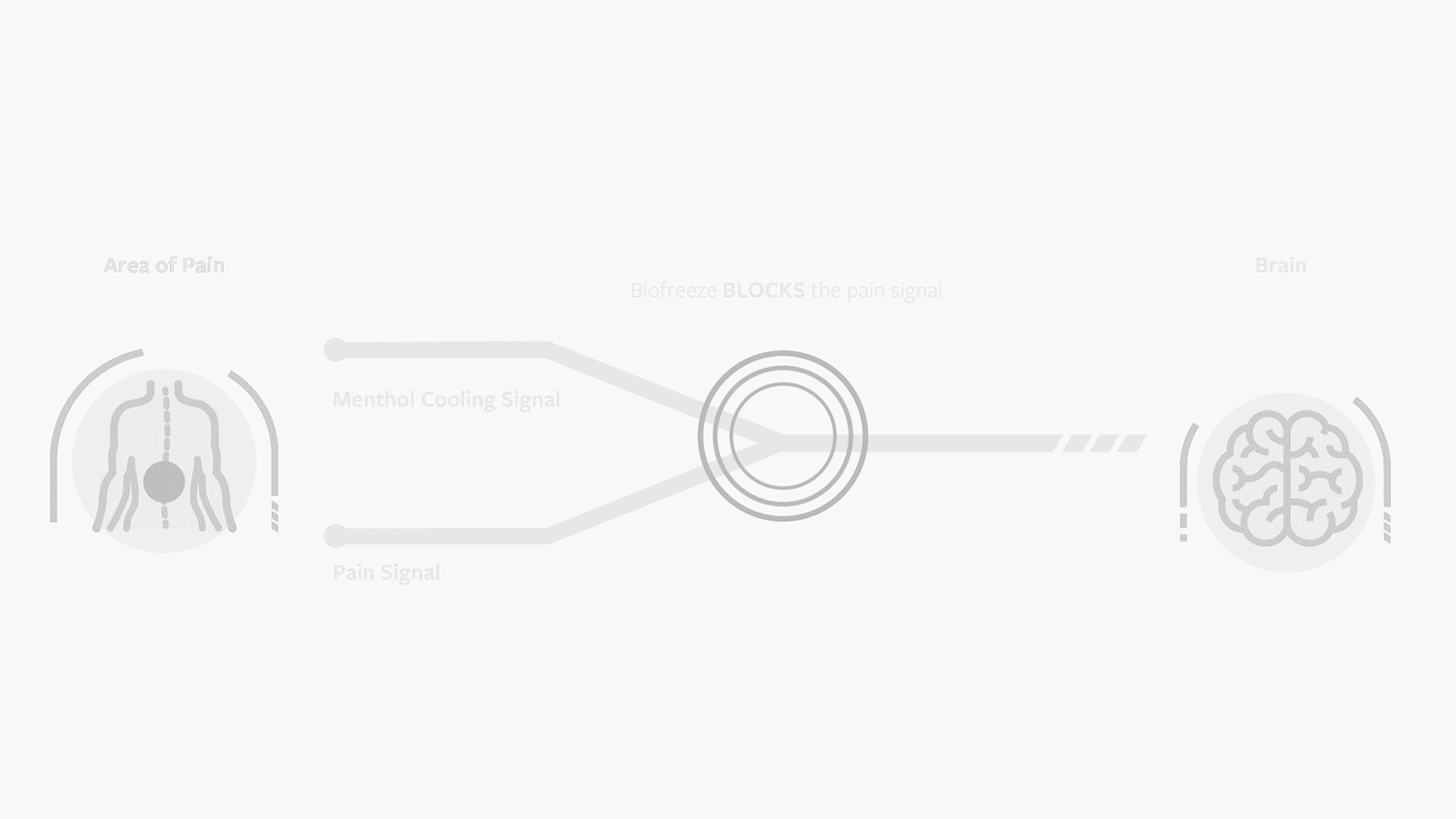
Looking for another pain relief option? Check out The One Tool You Need to Relieve Tennis Elbow Pain!
Recap
If your patient is suffering from outer elbow pain, they may have tennis elbow, which is caused by repetitive motions of the arm or wrist. While tennis elbow does affect tennis players, it can also affect anyone whose job or hobby includes frequent physical labor.
Hot and cold therapy, and topical pain relievers are great tools to use when recovering from tennis elbow, but proper form is the best way to prevent injury.
References
- “Tennis Elbow.” Mayo Clinic, Mayo Foundation for Medical Education and Research, 14 Feb. 2019, https://mayocl.in/2wZGBd8
- Mike, Mike Walden. “How Does A Tennis Elbow Brace Work?” Sportsinjuryclinic.net, Sports Injury Clinic, 30 July 2019, https://bit.ly/2UDp1Va
- Jafarian, Fahimeh, et al. “The Immediate Effect of Orthotic Management on Grip Strength of Patients with Lateral Epicondylosis.” Journal of Orthopaedic & Sports Physical Therapy, 1 June 2009, https://bit.ly/39GcEw7
- Sambrook, Jan. “Ice and Heat Treatment for Injuries. Sprains; Strains; and Trauma.” Patient.info, 19 Oct. 2016, https://bit.ly/3aHpRpJ
Medical Disclaimer: The information provided on this site, including text, graphics, images and other material, are for informational purposes only and are not intended to substitute for professional medical advice, diagnosis or treatment. Always seek the advice of your physician or other healthcare professional with any questions or concerns you may have regarding your condition.







 US
US France
France Australia
Australia
